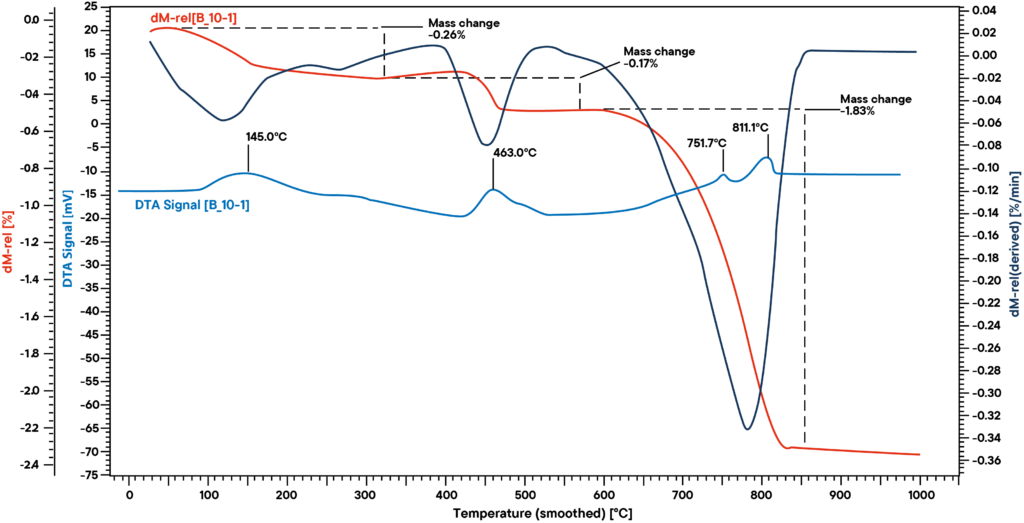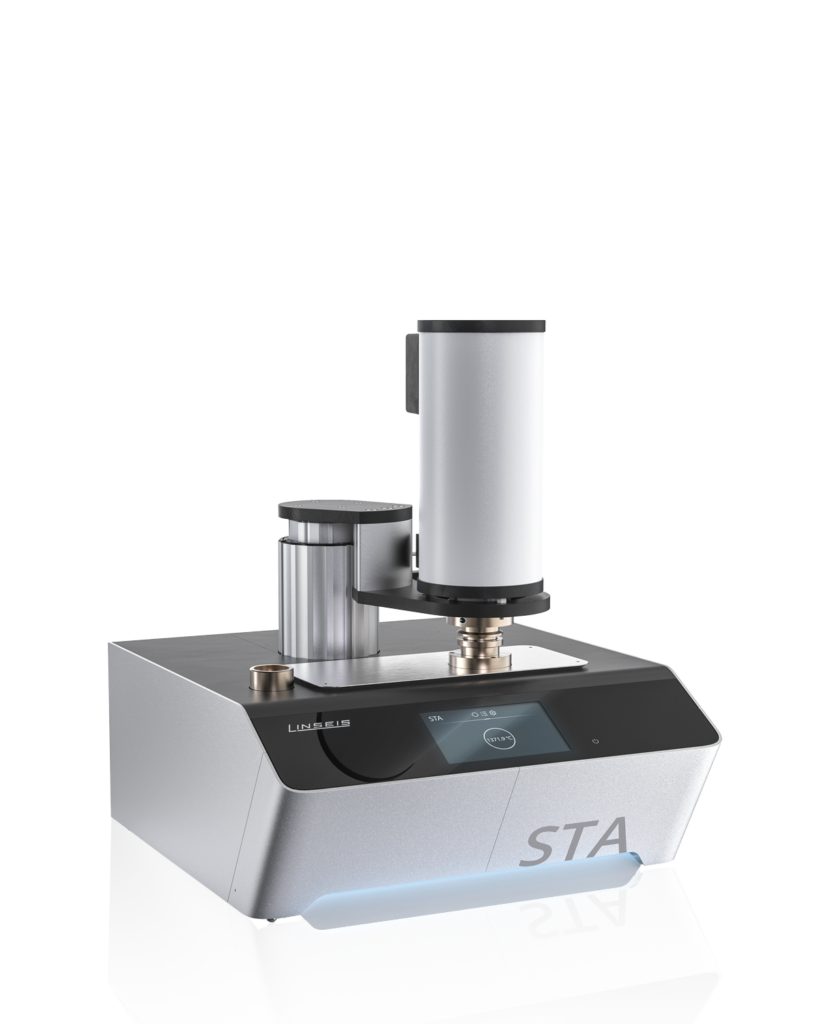Cement is one of the most used materials in construction of buildings. It consists of a mixture of minerals, silicates, carbonates and water. The exact composition, the grade of humidity and the organic content have a huge influence on hardening time and properties of the final product. Therefore analysis of raw materials and dry cement is necessary.

The measurement above was carried out with a TG-DSC (method of STA). The main parts of cement are tri calcium silicate, di calcium silicate and tri calcium aluminates.
After mixing the raw cement with water, different hydrates slowly form. When put in a STA, the absorbed water evaporates first during thermal decomposition, then hydrates of the calcium silicate decompose and at 570°C the hydroxides of calcium, magnesium and aluminum follow.
You can see this effect as mass loss steps (red curve) with parallel endothermic effects on the DSC signal (blue curve). Subsequently, carbon dioxide is released from the carbonates, showing a huge mass loss step at around 800°C.

